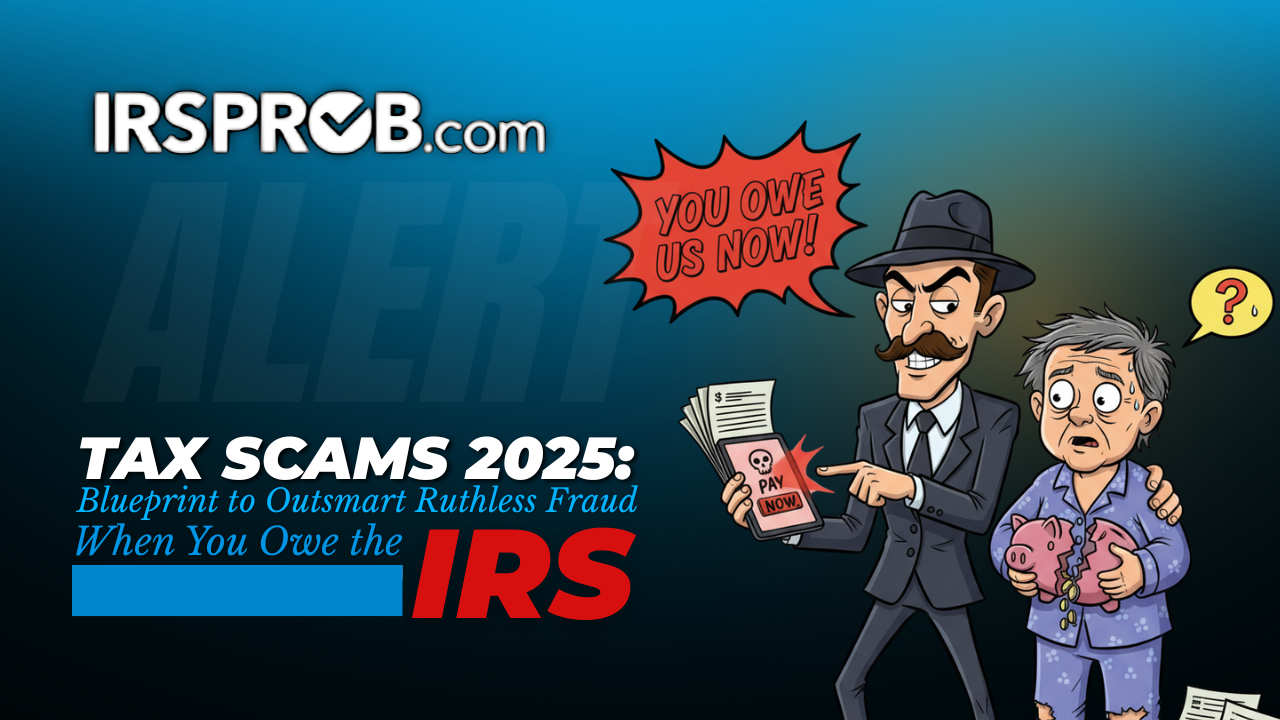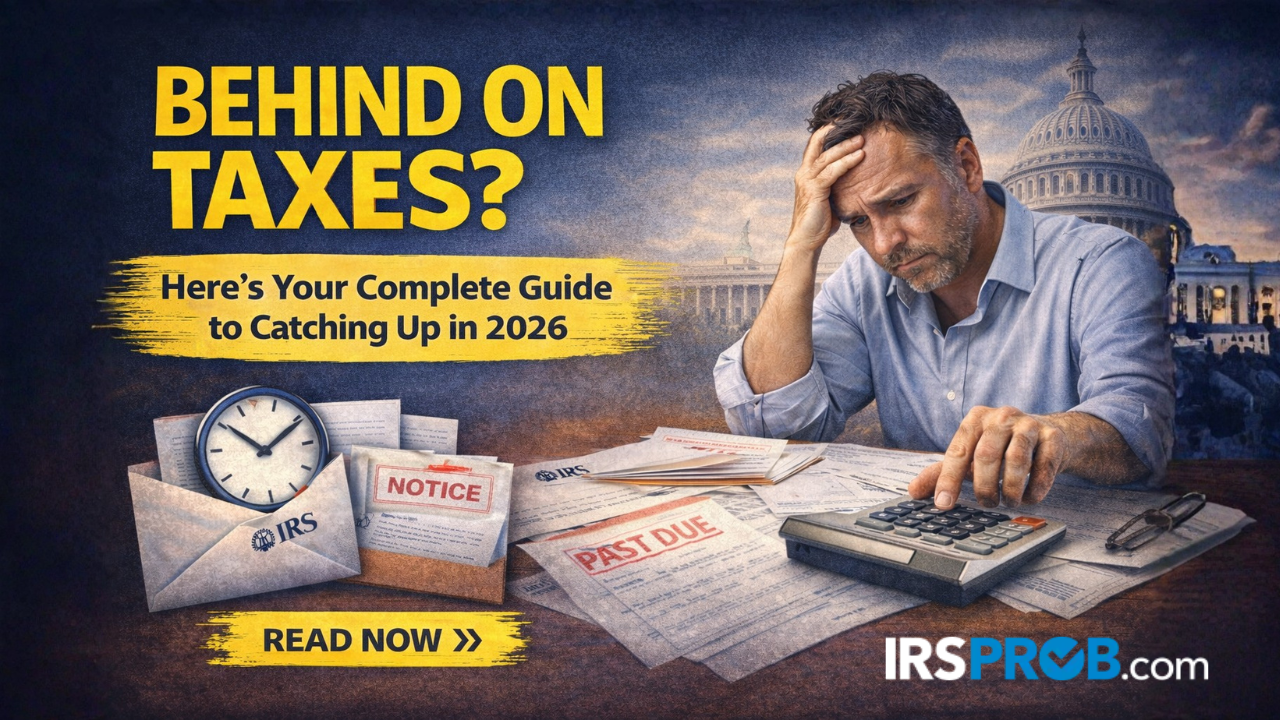
Tax Scams are on the rise, owing the IRS is stressful enough without predators circling. Scammers study that pressure and stage convincing attacks that siphon cash, steal identities, and deepen trouble. The surest defense on tax scam is clarity. Know how fraudsters operate, learn how the real IRS initiates contact, and move with deliberate steps that protect your money while you pursue genuine relief.
Spot the cons and tax scams that strike taxpayers in debt
Understand how the real IRS makes contact
The IRS begins almost all collection activity by mail. Letters arrive before calls. You are allowed to question amounts, request verification, and appeal. The IRS does not demand payment by gift card, wire, or cryptocurrency. Agents do not threaten to send law enforcement to your door within minutes. Payments are made to the United States Treasury and official portals are reached from the IRS website that you arrive at by yourself, not from a link in an unsolicited message which is obviously a tax scam. Knowing these fundamentals gives you an ironclad filter that separates fact from fiction.
Why people who owe are targeted
Debt amplifies urgency. Scammers weaponize that urgency with fear and false hope. They talk fast, compress your timeline, and push you to act before you think, an obvious sign of tax scam or any scams. Recognize the tactic of tax scams. You are not required to decide on the spot. You always have the right to verify, the right to representation, and the right to a clear explanation of what you owe and why.
Proven ways to resolve a real IRS balance
There are credible paths that reduce pressure and create structure. None are magical. All require compliance and documentation. They work because they are established in law.
Installment agreement
If you can pay over time, a monthly plan can halt aggressive collection and keep you current. Payment size depends on your balance and budget. Staying current on future filings is essential to keep the plan in good standing.
Offer in Compromise
In select cases the IRS accepts less than the full amount. Eligibility turns on your income, assets, necessary living expenses, and reasonable collection potential. A true professional will stress that approval is not guaranteed and that complete and accurate financial disclosure is mandatory.
Currently not collectible status
If you cannot pay anything without creating hardship, the IRS may pause collection. Penalties and interest continue to accrue, but active collection stops. You must respond to periodic requests for updated financial information.
Penalty relief
If you have a first times filing slip or a justifiable reason for falling behind, you may qualify for penalty abatement. This does not erase tax or interest, but it can reduce the total and create breathing room.
Representation and appeals
You can authorize a licensed representative to speak for you. An enrolled agent, CPA, or tax attorney can request transcripts, test the IRS numbers, and negotiate a path forward. If you disagree with a decision, a structured appeal gives you another review.
A Five Minutes Triage for Any Suspicious Contact
Use this checklist the moment something feels off. Always keep in mind on possibility of tax scams
- Stop and breathe. Scammers push urgency. Slow the pace.
- Take a snapshot of the message or caller ID. Preserve evidence.
- Search your files for recent IRS letters. Compare notice numbers and amounts.
- Sign in to your IRS Online Account or retrieve transcripts to confirm balances. Do not use links in the suspect message.
- Speak only after verification. If you still want help, call the official IRS number or your trusted representative.
- Report the attempt to the IRS and to the Federal Trade Commission. Every report helps protect others.
Simple Phone Scripts That Keep You Safe From Tax Scams
If a caller claims to be from the IRS, use a script that buys time and restores control.
- “I do not confirm any information over the phone. I will contact the IRS directly using the official number.”
- “I require a written notice mailed to the address on file before any discussion.”
- “I will review my IRS Online Account and respond in writing.”
Then hang up. Follow your verification steps. Document what happened.
How to Choose Real Help Not a Tax Scams
If you decide to hire a professional, select with care.
Check credentials
Confirm that the person is an enrolled agent, CPA, or attorney in good standing. Look up licenses and disciplinary history.
Insist on a diagnostic first
A serious practitioner reviews transcripts, prior returns, and your finances before proposing a strategy. Beware of anyone who quotes a miracle result without analysis.
Demand a clear engagement letter
You should see the scope of work, fees, timelines, and responsibilities in writing. Avoid large upfront fees that do not align with defined tasks and milestones.
Stay engaged
You are the decision maker. Read every form before it is submitted. Keep copies of all correspondence. Calendar deadlines so nothing slips.
The Decisive Mindset: Tax Scams Avoidance
Fraudsters or personalities doing tax scams rely on panic. Replace panic with process. When you receive a call, a text, or a letter, your next move is not payment. Your next move is verification to prevent on tax scams. When you face a real tax balance, your next move is not a shortcut. Your next move is a plan built on rules that actually exist.
Relief is real when it follows the law. Installment agreements, Offers in Compromise, penalty relief, and appeal rights create order and reduce risk. Scams produce the opposite. They drain cash, expose identities, and compound the problem you were trying to solve.
Take ownership of the facts, follow the steps in this blueprint, and keep your records organized. With a calm process and trusted guidance, you can protect your finances and move toward resolution with confidence.







